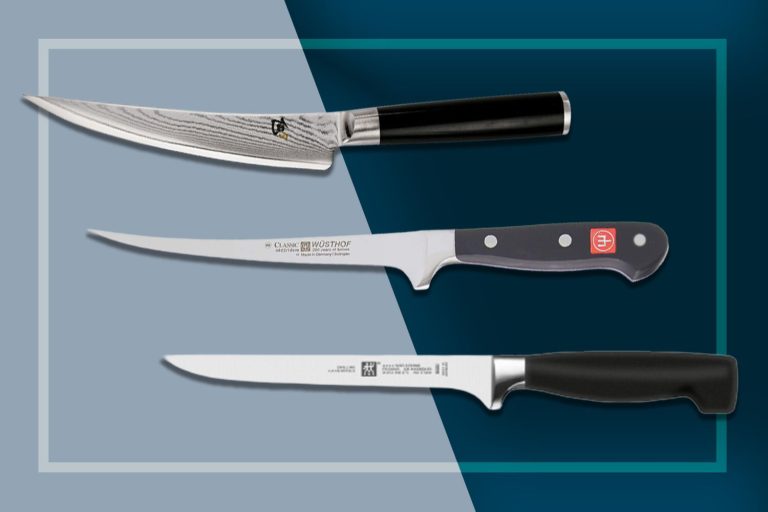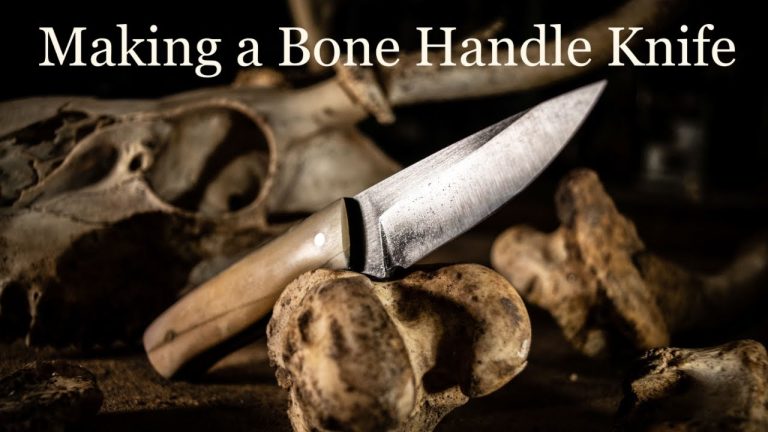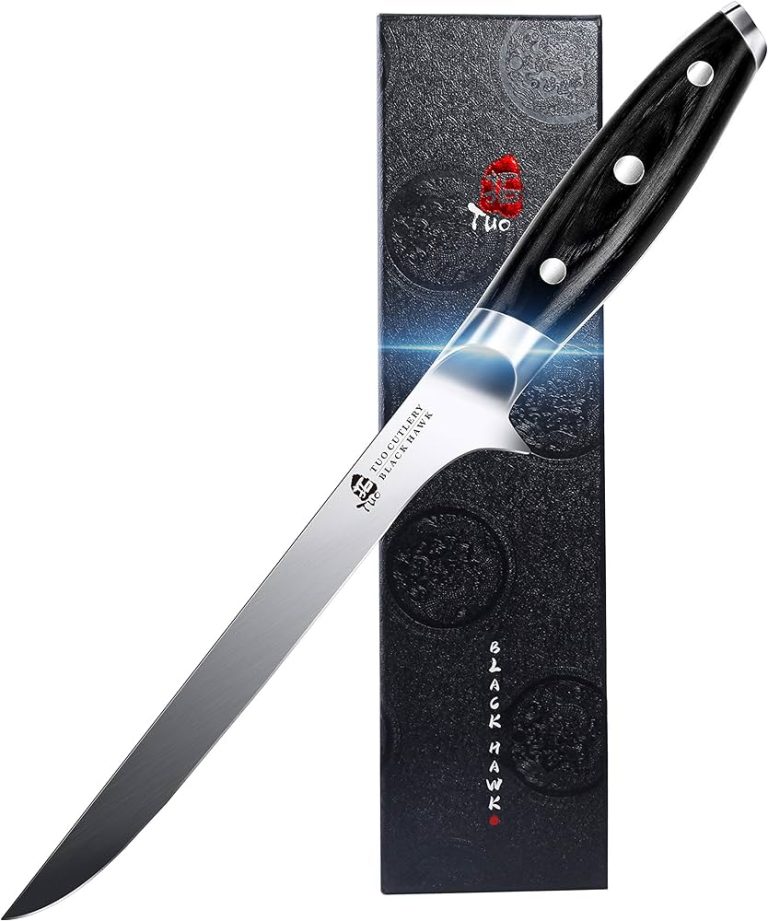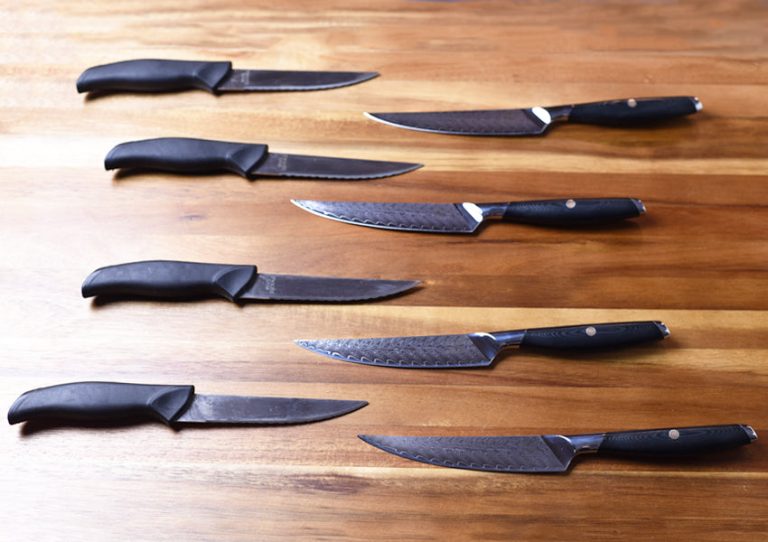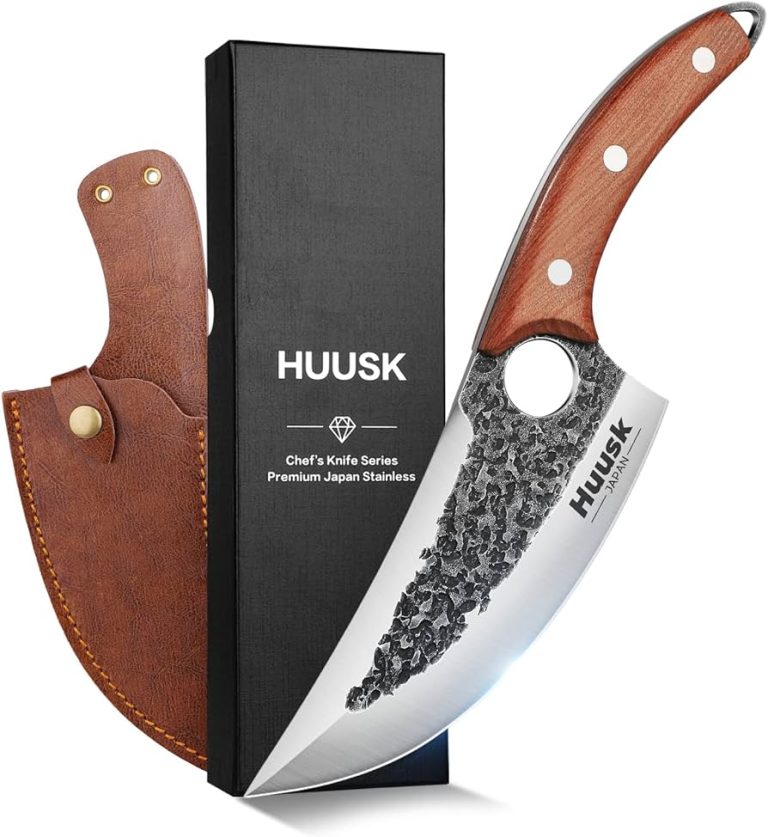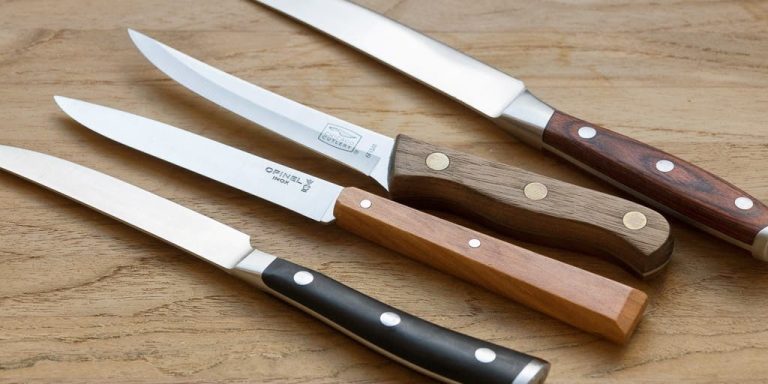Serrated Utility Knife Uses: Unlock the Versatility of this Essential Kitchen Tool
A serrated utility knife is a versatile tool that can be used for cutting bread, fruits, vegetables, and other food items with tough exteriors. It is also handy for tasks such as slicing through plastic packaging, trimming plants, and even opening boxes.
The serrated edge of the knife helps to grip and cut through tough materials, providing a clean and precise cut. With its wide range of uses, a serrated utility knife is a must-have tool in any kitchen or toolbox. Whether you need to slice, chop, or trim, this knife will get the job done efficiently and effectively.
The Essential Kitchen Tool
Introducing the serrated utility knife, a must-have tool in every kitchen. This versatile knife is designed to handle a wide range of tasks, making it a valuable asset for any cook or chef. Its unique serrated blade allows for effortless slicing through foods with tough exteriors and soft interiors, such as bread, tomatoes, and citrus fruits. The serrations grip the surface of the food, ensuring precise cuts without squishing or tearing.
One of the key features of the serrated utility knife is its size. With a blade typically ranging from 4 to 6 inches long, it is smaller than a bread knife but longer than a paring knife, offering the perfect balance between control and reach. Its narrow, pointed tip allows for delicate, intricate cuts, while the length of the blade makes it suitable for larger ingredients.
Overall, the serrated utility knife is an indispensable tool in the kitchen. Whether you’re a professional chef or a home cook, its unique design and features make it a go-to knife for a wide range of tasks. From slicing through crusty bread to segmenting juicy tomatoes, this versatile knife will not disappoint.
Culinary Applications Of The Serrated Utility Knife
table, th, td { border: 1px solid black; border-collapse: collapse; } th, td { padding: 8px; text-align: left; }A serrated utility knife is a versatile tool in the kitchen, offering a wide range of culinary uses. From effortlessly slicing through crusty bread to efficiently tackling soft-skinned fruits and vegetables, this type of knife is a must-have for any cooking enthusiast. Whether you’re a professional chef or an amateur cook, here are some ways you can make the most out of your serrated utility knife:
| Serrated Utility Knife Uses |
|---|
| Slicing through crusty bread with ease |
| Efficiently tackling soft-skinned fruits and vegetables |
| Perfectly portioning delicate desserts |
| Overcoming challenging carving tasks |
When it comes to slicing through crusty bread, the serrated edge of the utility knife is designed to grip and cut through the tough exterior while maintaining the integrity of the soft interior. This ensures that you achieve clean, even slices without crushing or tearing the bread. Additionally, the serrations help to prevent the knife from slipping, making it safer to use.
While a regular chef’s knife can handle most fruits and vegetables, a serrated utility knife excels at tackling soft-skinned varieties like tomatoes and peaches. The serrated edge allows for smooth, precise cuts without squishing or damaging the delicate flesh. It also proves handy when removing the skin from slippery items like oranges or lemons.
When it comes to portioning delicate desserts, such as cakes or pastries, a serrated utility knife helps you achieve clean and professional-looking slices. The serrations grip the dessert’s surface, preventing it from crumbling or losing its shape. This ensures each portion is picture-perfect and ready to serve.
In addition to its culinary uses, a serrated utility knife is also invaluable for overcoming challenging carving tasks. Whether you need to carve a turkey, roast, or melon, the sharp serrated edge allows you to navigate through tough exterior surfaces while maintaining control and precision.
Creative Ways To Utilize The Serrated Utility Knife
A serrated utility knife is a versatile tool that can be used in various creative ways. Its sharp, serrated blade makes it perfect for crafting beautiful garnishes and decorations, adding an elegant touch to any dish. Whether you’re creating intricate designs on fruits or vegetables or cutting delicate shapes from cheese or chocolate, this knife allows for precise and refined cuts.
Not only is the serrated utility knife great for aesthetics, but it’s also ideal for making precise cuts for sushi and sashimi. The serrated edge allows you to effortlessly slice through fish and other ingredients without crushing or tearing them, resulting in perfectly shaped sushi rolls or thinly sliced sashimi pieces.
In addition, this knife is perfect for transforming tough cuts of meat into tender masterpieces. The serrated blade easily glides through tough connective tissues and fat, allowing for cleaner cuts and more tender meat. Whether you’re preparing a juicy steak or a slow-cooked roast, this knife will ensure each slice is a delight to savor.
Lastly, a serrated utility knife is a must-have tool for achieving flawless layered cake slices. The sharp serrations grip the cake, preventing it from crumbling or sliding during cutting. With this knife, you can effortlessly create even and aesthetically pleasing cake layers, ensuring each slice is a picture-perfect treat.
Maintenance And Care Tips For Serrated Utility Knives
Proper maintenance and care are essential for maximizing the longevity of your serrated utility knife. When it comes to cleaning, it’s important to use proper techniques to avoid damaging the blade. After each use, rinse the knife under warm water, using a soft cloth or brush to remove any food residue. Avoid using harsh abrasives or cleaners, as they can dull or scratch the blade.
Storage is another key factor in maintaining the knife’s longevity and safety. Store the knife in a designated knife block or drawer to protect the blade and prevent accidents. Avoid storing it with other utensils that can cause damage.
To ensure optimal performance, it’s important to regularly hone and sharpen your serrated utility knife. Honing helps to realign the blade’s edge, while sharpening removes any nicks or dull spots. Use a honing rod specifically designed for serrated knives, gently pressing the knife against the rod in a sweeping motion. For sharpening, consider professional sharpening services or a serrated knife sharpening tool.
Shopping Guide: Finding The Perfect Serrated Utility Knife
Shopping Guide: Finding the Perfect Serrated Utility Knife
- Blade: Look for a serrated utility knife with a **sharp and durable blade**, ideally made of high-quality stainless steel. This ensures the knife can handle various cutting tasks and maintain its performance for an extended period.
- Handle: **Consider different handle materials** such as wood, plastic, or rubber. Each provides a distinct grip and level of comfort, so choose the one that feels most comfortable and secure in your hand.
- Ergonomics: **Prioritize ergonomic designs** that offer a comfortable grip and promote efficient cutting. Look for features like finger grooves, textured handles, or contoured shapes that reduce hand fatigue.
- Brands and models: **Compare different brands and models** to find the one that suits your needs the best. Look for reputable brands known for producing high-quality knives and check reviews from other users to gauge their reliability.
- Budget-friendly options: **Explore budget-friendly options** without compromising on quality. While there are expensive knives on the market, you can still find reliable utility knives at affordable prices by researching and comparing options.

Credit: www.amazon.com
Safety Precautions And Best Practices
Safety Precautions and Best Practices
|
Frequently Asked Questions About Serrated Utility Knives
Serrated Utility Knife Uses
A serrated utility knife is a versatile tool that offers a range of uses. Unlike other knives, the serrated edge allows for easier cutting through tough materials, such as bread and tomatoes. However, it is important to note that a serrated utility knife may not be suitable for all cutting tasks.
- How does a serrated utility knife differ from other knives? Unlike traditional knives, serrated utility knives have a series of small, pointed teeth along the blade, which help grip and tear through tough materials more effectively.
- Can a serrated utility knife be used for all cutting tasks? While a serrated utility knife is great for slicing through bread, cakes, and other delicate foods with tough exteriors, it may not be the best choice for precision tasks like peeling or mincing.
- What features should I look for when purchasing a serrated utility knife? When buying a serrated utility knife, consider the handle material, blade length, and construction quality. Look for a comfortable handle and a durable, stainless steel blade.
- How often should a serrated utility knife be sharpened? Unlike regular knives, serrated utility knives do not require frequent sharpening. However, if you notice a decline in performance, it’s a good idea to have it professionally sharpened.
Conclusion
To wrap up, serrated utility knives are versatile tools that offer numerous uses in various settings. Their serrated blades provide excellent cutting performance, making them ideal for tasks such as slicing through tough materials like cardboard and rope. They are also great for cutting through soft foods like bread and tomatoes without crushing them.
Serrated utility knives are commonly used in kitchens, camping trips, and construction sites, making them a handy tool for both professionals and DIY enthusiasts. These knives are designed to be durable and long-lasting, ensuring that they can withstand even the toughest cutting jobs.
Their versatility and excellent cutting performance make them a valuable addition to any toolkit or kitchen. Whether you’re a chef, a camper, or a DIY enthusiast, a serrated utility knife is a must-have tool that will make your cutting tasks easier and more efficient.
So why not invest in a high-quality serrated utility knife today? It’s a small but significant tool that can make a big difference in your everyday tasks.

